Two and a half months after the flight of Freedom 7, NASA was ready for another Mercury – Redstone test flight. The pilot for this flight was Virgil Ivan “Gus” Grissom, a Korean War Veteran from the United States Air Force. This flight was to be a duplicate of Shepards Freedom 7 flight, testing out the Mercury spacecraft on a simple sub orbital flight, but there were some changes to the vehicle control mechanisms, a new window to replace the side veiwports on previous capsules, and a changed hatch system.. The new system, to be used for the rest of the program, was held down by explosive bolts, rather than a more typical mechanical release system.
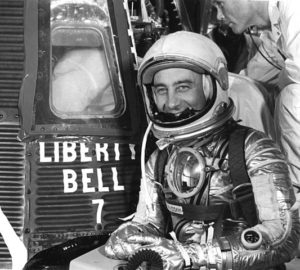
On July 21st, 1961, MR4 lifted off from Launch Complex 5 at 7:20AM Eastern Standard Time to a flawless flight. A 15 minute suborbital hop into space, the last such planned flight in the Mercury program came and went, with Gus splashing down in the Atlantic, just like Shepard had back in May. In a way it’s almost sad that there isn’t anything special to say about this flight, with it being a repeat of the previous mission – later flights into space all have their unique traits, but this mission does have a rather terrifying ending.
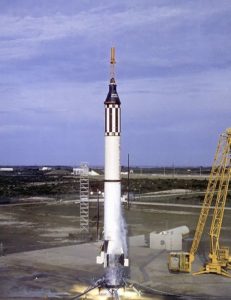
Sometime after splashdown, as Grissom was preparing for recovery, the hatch blew. Water began pouring into the capsule, which began to sink. Grissom swam out of flooding spacecraft awaiting rescue, while the helicopter sent in for spacecraft recovery struggled to try to lift the waterlogged craft.
The swelling ocean water, combined with the push from the helicopter blades, began to fill Grissoms suit – soon he wouldn’t be able to stay above water. He needed to be picked up, quickly.
A second helicopter came in and succeeded in rescuing him, while the first continued to try to recover the capsule. By the end of the struggle, the weight of the flooded spacecraft pulled the copter down to the oceans surface – the call was made to cut it and left Liberty Bell 7 sink.
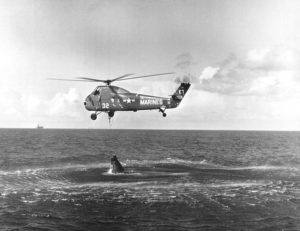
Grissom was safe, but the spacecraft was lost.
Grissom would spend much of the time after this flight defending his name – he was accused of blowing the hatch himself, out of fear. While he admitted he was scared during his ordeal, he always defended himself that he did not blow the hatch, either intentionally or accidentally. Several flights later, Wally Schirra would manually blow his hatch after recovery to show that such would leave injuries on the astronauts hand, injuries that were not present on Grissom after his flight. Later speculation would suggest that an external release lanyard came loose and caused the premature release of the hatch.
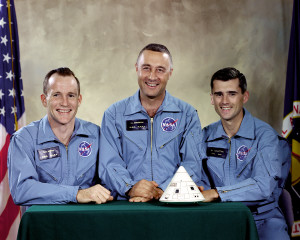
Grissom would later go to command Gemini 3 in 1965, and was to command Apollo 1 in 1967, when during a test on January 27th, 1967, there was a fire on the ground killing the crew.
The tragic irony of the Apollo 1 fire was that the inward opening hatch, which doomed the crew, was a direct result of the hatch failure on Grissoms Mercury flight.
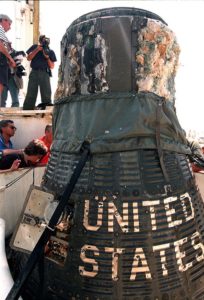
In 1999 Liberty Bell 7 was found and brought back to the surface. It hadn’t been seen for nearly 40 years.
https://en.wikipedia.org/wiki/Mercury-Redstone_4
https://en.wikipedia.org/wiki/Gus_Grissom
